Released in the UK in February 2012, the ‘SE’ suffix in BMW’s F650GS added up to a new paint job and an array of optional Special Equipment.
As a reminder, the ‘650’ uses the same 795cc engine as the more popular F800GS, but detuned to be more tracable and more economical, with higher, road-oriented gearing, shorter suspension travel, a lower seat, cast wheels with a single front disc and tubeless tyres.
The bike was loaned by BMW Motorrad and I rode it from new for over 4000 miles from London across Spain to Morocco and back in March 2012 to update my Morocco Overland book. I set off with around 600 miles on the clock, just after the first service and was out for three weeks.
My bike came with a batch of these optional extras: main stand, trip computer, heated grips and ABS, all of which I learned to appreciate. At the first service it was additionally accessorised and modified as follows:
- Heidenau K60 tyres (review here)
- Metal Mule rack, tall screen and rad guard
- BMW bash plate, engine protection bars and hand guards
- Touratech sidestand foot
- 1 tooth smaller 16T front sprocket
- 12v plug
- Ram mount
- Aerostich wool seat pad
Why the ‘650’, anyway?
Now they’ve had their teething problems sorted, I believe the ’650′ is the best of the two F-GSs twins for real-world overlanding. I wrote as much in the AMH6, even before I rode the bike.
BMW Motorrad did suggest I might like a new Sertao for the Morocco job, but that bike overweight slug has little to prove. Overall, I prefer the unsnatchiness of a twin over a big single, and there’s apparently less than 10 kilos weight difference, while you get a more smooth power and nearly-as-good economy. With damage protection, moderate speeds and alternative tyres, the 650 twin was fine on dirt roads and, with the exception of gearing, everything that differentiates the 650 from the 800GS makes it more suited to overlanding.
Comfort
On collection, the BMW felt comfy and natural to sit on, but I was warned by another 800 rider that the seat would be uncomfortable. Though I’m sure one man’s sofa is another man’s slab of coarse granite, for me at well over 100kg in all my riding clobber, the seat was the bike’s biggest flaw, just as I’d speculated while running in. Sadly, the Aerostich wool pad made little difference.
I put in a 600-km run across Spain on the way out from which my butt probably never recovered. That was followed by mostly sitting down on the pistes to spare the bike and baggage too much of a hammering (and standing was a bit awkward without bar risers), all of which probably helped beat the seat’s foam into powder.
By the time I turned back from southern Morocco, soreness returned so soon that when coming over the High Atlas, I couldn’t face the 1500 mile ride home. I pulled up at a village mattress shop and bought a 50mm slab of foam (left) which tucked in easily under the Aero pad (below). The soreness passed in a few days and Spain was crossed in an 800-km stage without agony. I recall the same discomfort on a GS1100 I borrowed years ago (confirmed by an 1100 rider I met on the Bilbao ferry) and even a GS1200A rider we met in Morocco said his seat was not up to the bike, and he was a light guy.
What is wrong with this seat – surely it’s something they’ve got to the bottom of (boom-boom) over the years? I suppose function may have suffered in the face of slim design to complement the bike’s looks, just as a Triumph Rocket III has a huge saddle to emphasise its bulk. It’s not all about width though, it must be foam quality or density. The Tenere’s saddle was no wider as I recall and was even hampered by a lip which stopped you moving back, but it was nowhere near as painful to sit on after two hours. There’s a bit of buried chat here on UKGSers about F-twin seats. It seems the inflatable Airhawk pad is the simplest solution if you ride long hours.
Even though I’m 6′ 1”, the low seat height was just right, if a bit low for easy standing up. It meant dabbing and paddling in sand or steadying over rocks was easy, but didn’t make the bike vulnerably low; the bashplate very rarely bottomed out, though caught plenty of flying hits.
The OE high option screen was way too short for me and without the taller Metal Mule item (left) the ride would have been grim, as I realised when I returned the bike without the screen and felt my arms lengthen by an inch. But as mentioned, I feel the top edge of the MM screen curves back too much and anyway, it’s still a little too low for me. Although it caused no buffeting, any clouds of bugs got splatted straight onto my visor rather than blown over like they’re supposed to. A couple of inches longer and it would have been perfect.
I never felt the screen was a distraction on the piste, though if I’d gone over the bars I’d have ripped it off for sure. For me, the Tenere’s screen – more upright and further forward like a Dakar racer (or indeed the Triumph Tiger 800 I tried on the way home) worked better once I clipped on the clunky Touratech extension (it was too heavy to fit on the MM screen). But as with seats, finding or adjusting a screen to suit your exact prefs can take a while. One size does not fit all.
It may be lower spec’ and shorter than the 800 model, but the firm suspension suited me fine, giving predictable behaviour in bumpy bends with no wallowing – better that than too soft, although taking the bike back the thought ‘harsh’ cropped up again. The only time I meddled with it was a rocky day’s riding without baggage when I wound the back out with the handy pre-load adjusting knob and lowered the tyres a bit more to soften the ride.
While you do feel the engine vibration at higher revs, it never intruded on comfort, nor did engine noise which either sounded great at town speeds, or was drowned by the helmet din. The light clutch was a real pleasure to use too, and got plenty of use at low speeds, feathering in first to get round the still-tall gearing. Despite that it never needed adjusting, neither did the foot controls. Some days my right knuckles got very sore from the holding the throttle open while keeping two fingers over the brake lever, but other days they didn’t, so it must be me.
Economy
The BMW comes with a 16-litre underseat tank. I was expecting excellent economy and most of the time I got it, though the average of 68.2mpg / 56.8US / 24.16 kpl / 4.14/100km over 23 fill ups was about 4% less good than the XT660Z’s 72mpg or 25 kpl. Of course, you get a smoother and more powerful engine. Worst result was a 51mpg on a partly sandy piste where I stuck with street pressure tyres for too long and so wasted a lot on wheelspin while pushing and paddling. Best was an 80mpg (28.3kpl) coming off the Middle Atlas, with quite a few 70mpgs when riding at <60mph with my mate on a Yamaha TTR250, much of which included piste stages with hours in first or second gear.
I don’t believe the wide baggage, tyres, high screen, heated equipment or the slightly lowered gearing had any real effect on fuel consumption, and like the Tenere, it seemed to be getting better and better as the miles wore on. Full records, here.
There was some pinking in deep sand, partly due to the hot conditions, tall gearing and the 12:1 compression ratio. With the fan whirring and the throttle virtually closed in 1st or 2nd, the fuelling would start surging, but it was never uncontrollable, just mildly annoying, although it did seem to coincide with higher fuel consumption figures.
Oil, water, drive chain
In 4000 miles no oil was used and I didn’t even think to check the water. I adjusted the chain once and even that may have been premature, which means BMW may have gone OTT to fit a quality chain after the early breakage issues. I oiled the chain most days with engine oil, but on reflection, this did little long-term good as it was soon thrown off. Next time I’d brush on thicker Tutoro oil.
Performance
The 650 has all the power I need and in fact I’d have liked to have tried it in the detuned 34hp version, assuming there are notable benefits in fuel consumption or cool running. I never needed to rev over 4000 while accelerating, and with the lower gearing, 5000rpm at 80mph was as fast as I went. The red line is at 8500.
The low rpm power really helped on the piste, pulling out of deep sand, even if the high, road gearing was not ideal here. Like I say, I’d spend all day in first or second.
Fuelling was smooth and very responsive, although this made the bike a bit of a handful the one time we rode a day on the piste with no baggage to damp the response. As mentioned it would start surging when it got hot – a slow track with a backwind – but that never lasted more than a few minutes until a higher speed cooled it down. Running at very low rpm with high gearing meant slow oil and water circulation speeds may not have aided cooling as much as they could.
With just a single disc on the front, the brakes were well matched to the bike’s performance. At least once the ABS stopped me from skidding over the edge while checking out the scenery, though I’m told the mass of brake fluid pumping around for ABS can contribute to the slightly woolly feeling at the lever. I never thought to turn the ABS off on the piste, and can’t imagine it would be necessary at the speeds I rode, as it came on reassuringly late on the dirt.
And as for the twin bulb front headlight, that was pretty good too on the few occasions I rode a night.
Road riding
On the road in Morocco I rarely exceed 60mph. At this speed riding is less tiring, safer, the cops won’t nail you and economy stays good. I felt the bike was stable up to 70mph on the K60s though at times there was a very slight wobbling from the headstock (as opposed to a weave), and possibly only on concrete highway surfaces in Spain. With the upright seating position, wide luggage, trial tyres and tall screen, I can’t say this bike felt that surefooted at high speed on the way out, though by the way back I was able to sit up to 80 with more confidence, either because the Heidenau tyres had worn in (this took longer than most – see review) or I was more in tune with the bike’s movements. I also think saddle comfort makes a bike handle better; when you’re tensed up in pain, your rigidity can affect a bike’s response. I met a GS1200 Adv rider who’d ridden both models and said getting back on his big 12, it just sat on the road like a wet pizza, however, you loaded it, largely down to its mass and the telefork.
Loaded up, the F-GS was hard to turn on hairpins, both on or off-road, just like the Tenere it tended to run wide or understeer. The Tenere was a tall bike but on the BM I attributed this to the seemingly long, 1575mm (62 inch) wheelbase. The bags were slung as far forward as possible. Early on I noticed the bike’s balance at sub-walking pace was very good; you can easily keep your feet up at 1mph and this must have helped with low-speed control on the piste.
To be fair, some of the roads and tracks in Morocco are very narrow and tight, with the wide baggage pushing you out towards thought-provoking drops. Even some mountain back roads have strips of gravel down the middle from uncleared landslides where any big, loaded bike would struggle to progress quickly and smoothly. One time I found a well-surfaced road tar in the Middle Atlas and blasted along from bend to bend around 60 or 70, but you can’t forget this is a relatively tall bike for that sort of spirited riding.
Off road riding
Dirt biking in Morocco is mostly on rocky or gravel tracks, and much to my relief the K60 tyres were uncannily good. I’m sure the OE Tourances or whatever they were, would have been less effective.
I take it fairly easy when riding alone on the piste, for safety and to spare the hammering on what is really a road bike. Within these limits I was amazed to find how easy the bike was to handle with its low seat, light clutch, ABS, firm suspension great tyres and good clearance – and all despite the tall gearing, occasional hot surging and tight turning limitations.
Early on it was quite disorienting how well the bike would track straight in deep sandy ruts, right up to the point where I lost my nerve, or less often, when the front tucked in. When this happened the instinct was to lean with it while standing up and gas it, all in one swift movement, to which the bike responded correctly every time, surging forward to regain its steering composure. The full-length bash plate meant you could do this confidently on any rideable surface and take the hits. Though I had my share of these moments, I never fell off the GS or got so wildly out of shape that I thought I might do.
Not surprisingly I found the handlebars were too low when standing up off-road, causing me to crouch unsustainably. Most bikes are like this at my height, though handlebar risers would have easily fixed it; something I forgot to address before I left.
Of course dry dirt and even sand are fairly easy to ride on any bike with clearance and the right technique and tyre pressures. I’m sure the K60s would have clogged up and the weight got to me on very muddy tracks, but all in all, I was pleasantly amazed how well the GS coped off-road in Morocco.
OE and extra equipment
The dashboard was slightly harder to read compared to the higher rally-style layout on the Tenere. Speedo numbers were a bit small, and the computer lacking in contrast and clarity in sub-optimal conditions.
The computer is pretty good though, and besides the total mileage, two trip metres, clock, fuel and water temperature levels and nice big gear indicator, a button on the left bar lets you toggle between air temperature, average speed or mpg (both resettable though I couldn’t work our how) and live mpg which could dip down to the high 40s uphill at 70mph, or give a maxed-out figure of 199mpg cruising downhill on a shut throttle. Interestingly, it must be all pretty accurate as the computer’s average mpg of 68 matched my own figure which was calculated from actual volume and distance at each fill up.
I’d have preferred a digital speedo that can switch to kph like the Tenere, while the indicators and other switchgear I eventually got used to, though in a panic, might well get it wrong.
The temperature gauge never budged, but the fan came on quite a lot. I do wonder if the close-fitting Metal Mule radiator guard may have exacerbated this. I’d be tempted to mount it an inch forward to get some more circulation behind it without losing protection. I’ve heard the fans or fan switch packs up on F-GSs when they get clogged with grass or mud – but that’s not unique to this model
The fuel goes to reserve at round 12 litres, or between 180 and 222 miles. The furthest I ran the tank was 238 miles at which point it took 14.3 litres. There are 16 useable litres says the handbook, but the capacity is 18 – I’m never sure which is which.
Checked against a GPS over 34 miles, I found the odometre (distance recorder) to be a mile over so about 3% out, though I’m not convinced GPS distance recordings are always that accurate as it depends on the set-up in recording frequency. This means that my mpg readings are a tad optimistic assuming all fuel bowsers were correctly calibrated; on some fill-ups in Morocco I did wonder. As for the speedo, at an indicated 60 or 70 it’s 5% out according to GPS, so the bike reads a little faster than it is.
Non-OE equipment besides what’s been mentioned all did the job, the BMW bashplate took a lot of flying clunks and clangs on the chin but rarely landed hard, their engine bars were only used as pouch racks I’m pleased to say, same with the lever guards, though the handguards could have been much bigger against driving rain, like the Acerbis Rally buckets of old. The Metal Mule rack was never taxed, helping merely to keep 20kg of throw-overs off the bodywork, and as said, the Aerostich wool pad couldn’t disguise a seat fit for the welcome centre at Guantanamo Bay.
As always my nifty tank net, this time used with a foam pad to protect the paintwork, was a great idea, and the Touratech GPS holder on a RAM mount held up (the Nuvi satnav I laid on the tank foam when off-road). The Garmin 12v cig plug leads both on the 76csx and the Nuvi began playing up. Hardwiring as we know is the answer to that one. My engine side pouches were dead nifty for handy access to water, oils or stuff in general, even if they are more Steptoe & Son than Rally Pro.
Durability
Not a single thing malfunctioned, broke, came loose or fell off and so I feel the BMW has been very well screwed together.
Summary
The Morocco run confirmed my early impressions while revealing how well the GS coped with dry dirt tracks. I feel the same way about what I liked and disliked at 500 miles but have proved that this ‘650’ doesn’t just look like an adventure touring bike; with appropriate tyres it performs like one too. Once that seat is fixed (there must be several solutions out by now) the 650 GS ought to offer continent-crossing comfort with adequate fully loaded off-road ability. With the smooth and tracable twin-cylinder engine and nearly as good economy, I’d say it makes a great all-rounder.
The only truly unresolvable fly in the off-roading ointment was the tall gearing. Dropping a tooth on the front sprocket didn’t really fix that, fitting a couple of teeth more on the back would – but the clutch didn’t complain. Now the 650GS SE looks less drab, that’s the only thing I can see that works better on the more powerful 800 model.

Since I wrote this the newer ‘700’ model (left and below) has come out alongside the new 800. With revised styling, a bit more power, a second front disc but barely modified gearing. It’s also sai the 650 runs better on low octane fuel which is a big plus in the AMZ. More 650 vs 700 here.
A few years later I rode a well-used, rental 700 for a week and liked it as much as the 650. And a year after that tried the new F750GS too.



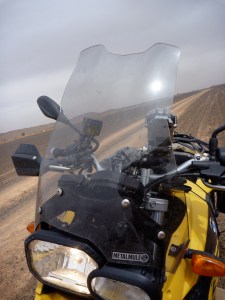

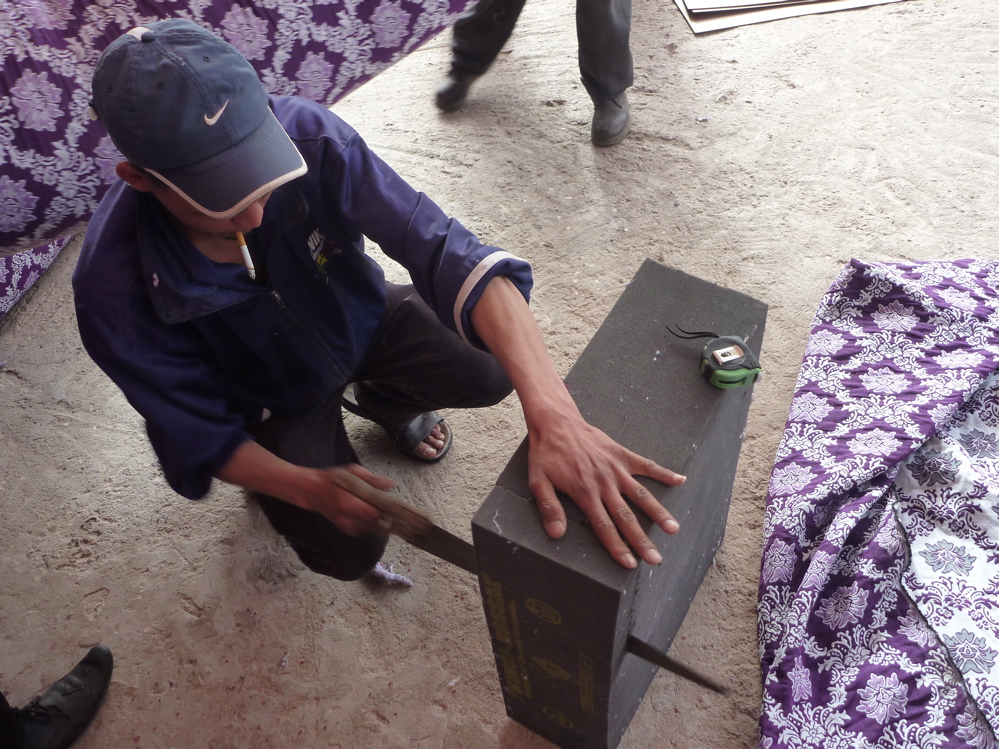
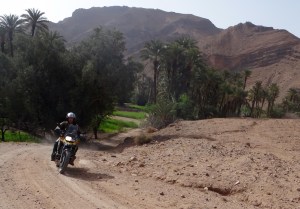


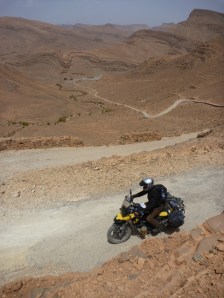
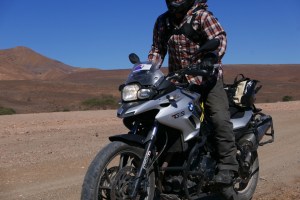



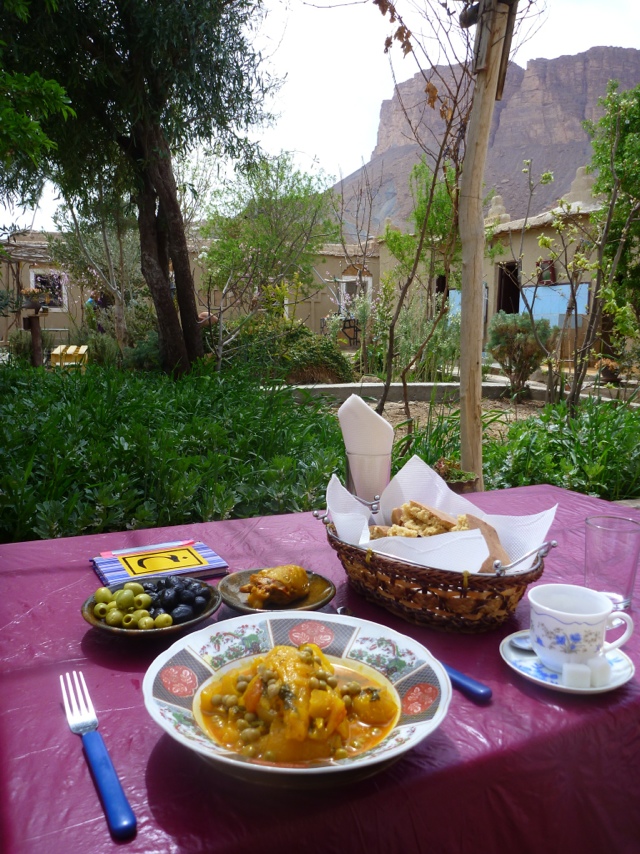


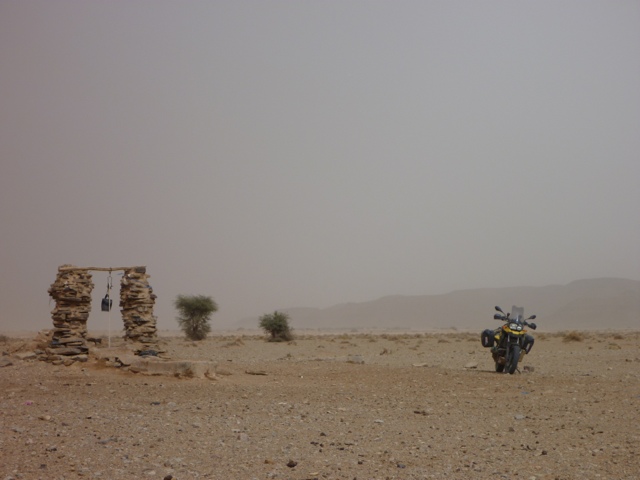


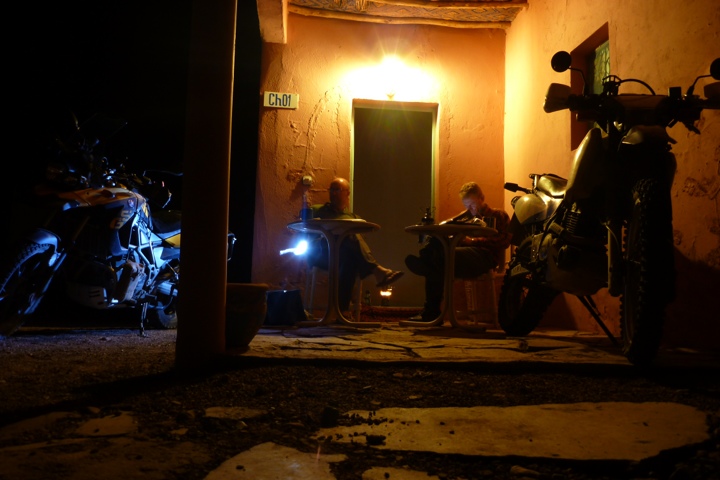

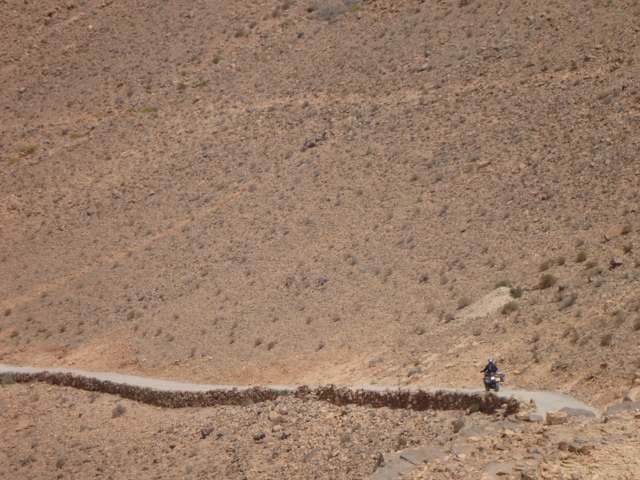
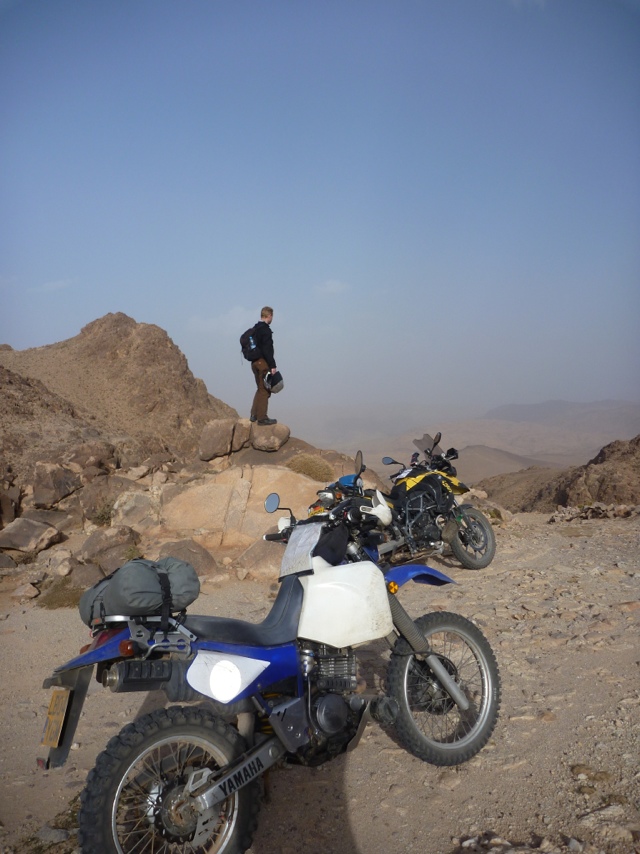

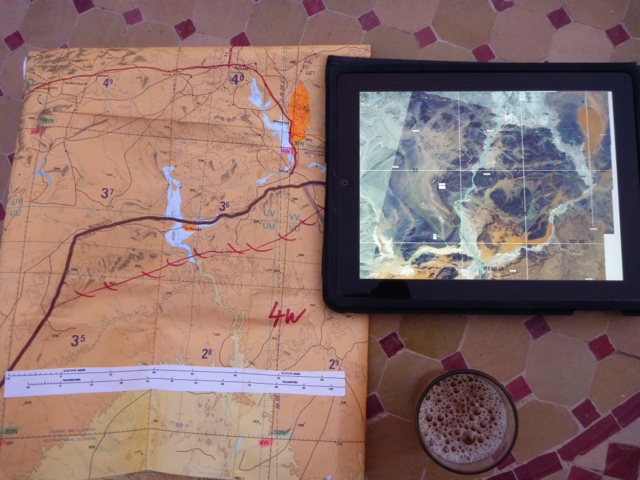

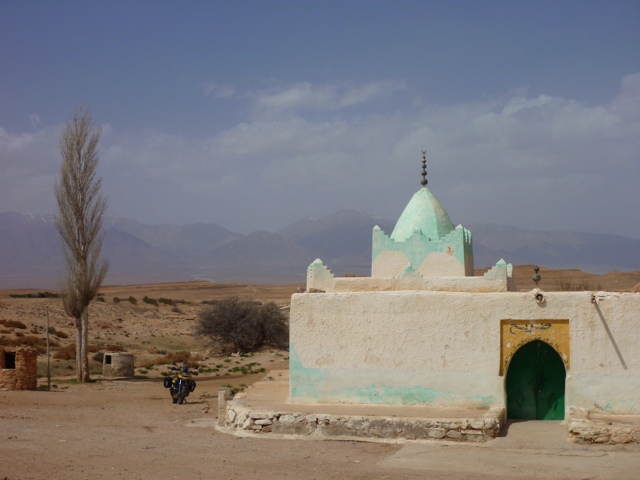
Pingback: 1984 – Algeria – Bénélé – Part II | Sahara Overland
Pingback: Horizons Unlimited - The HUBB